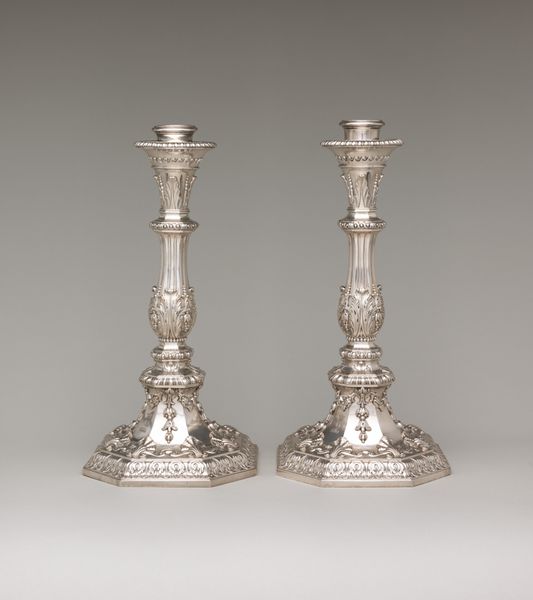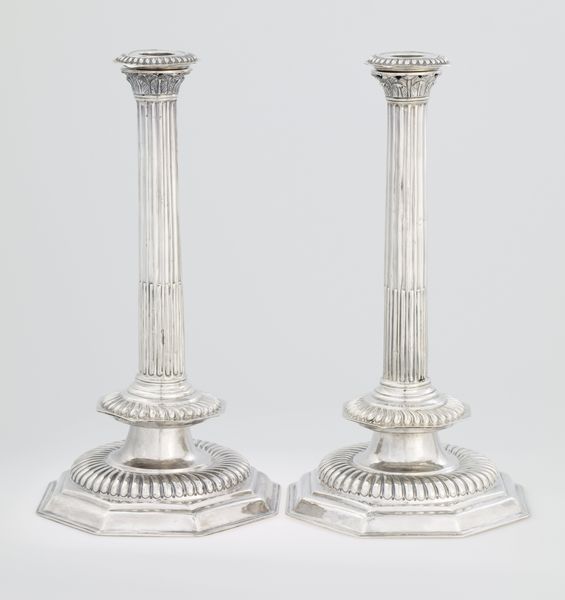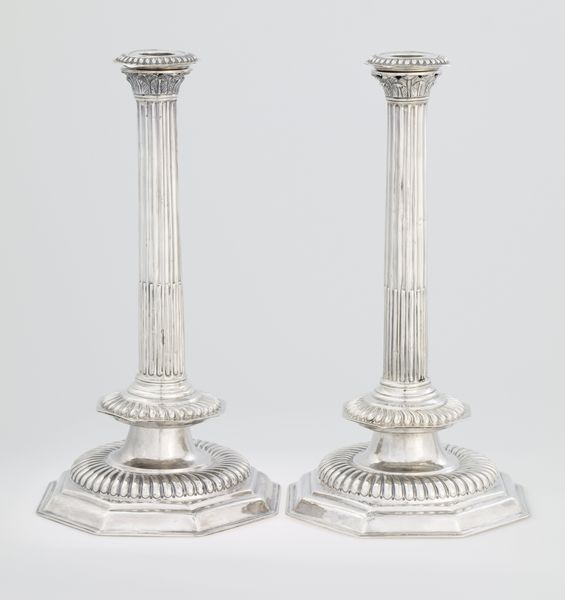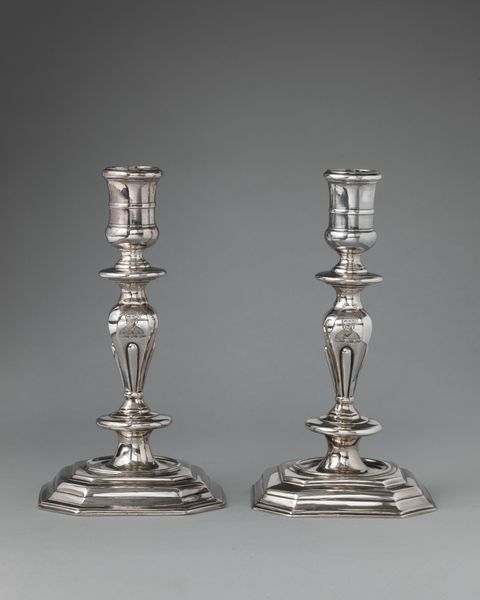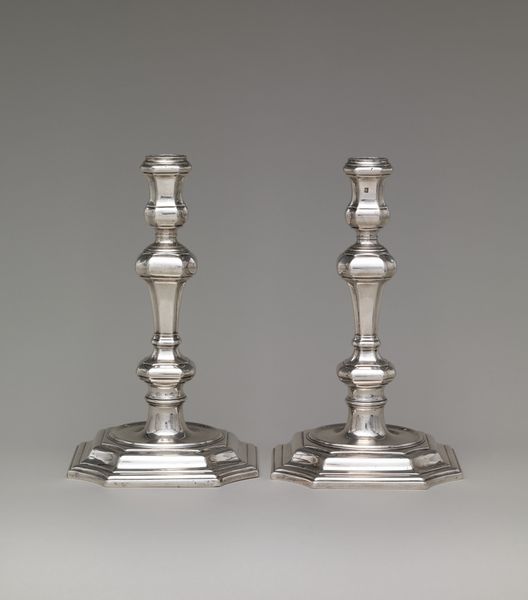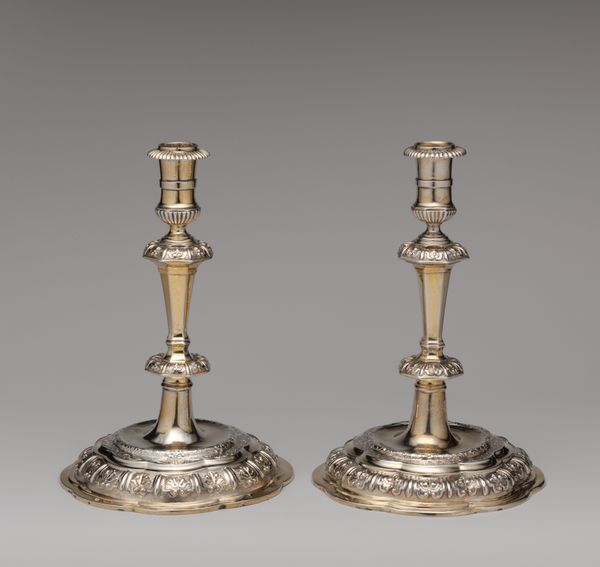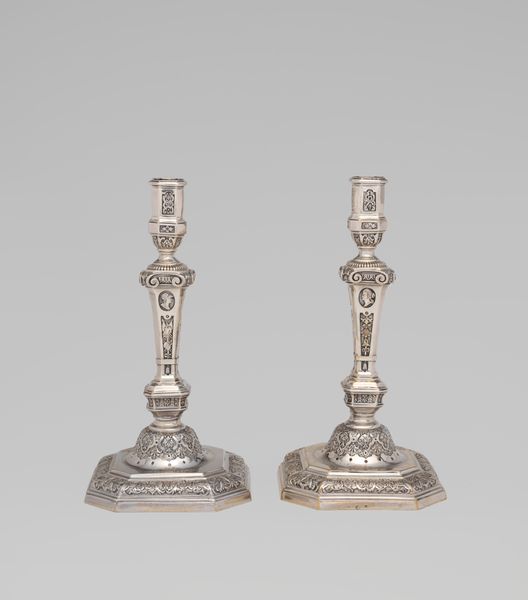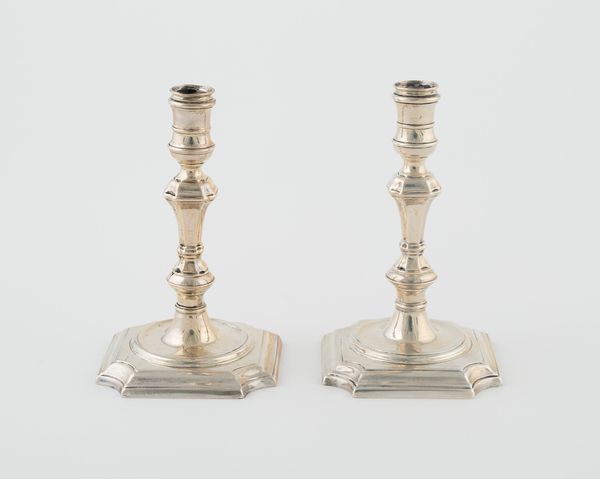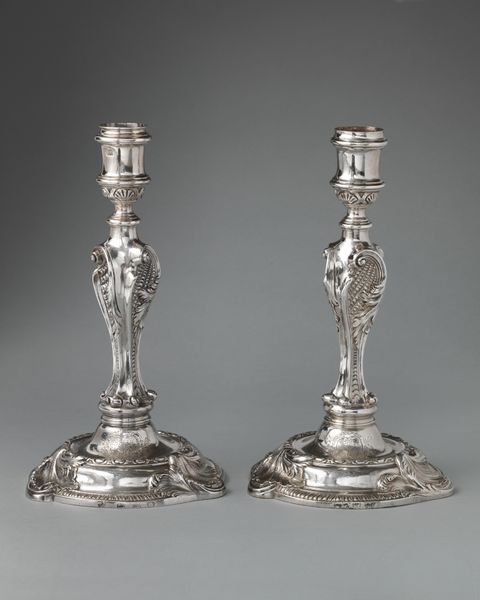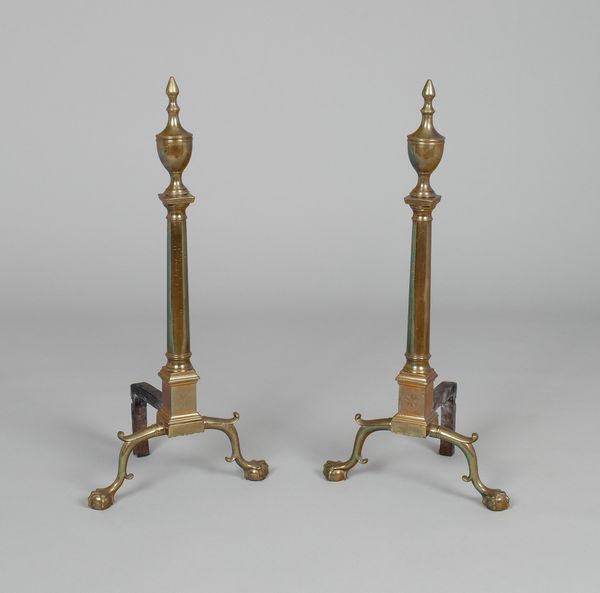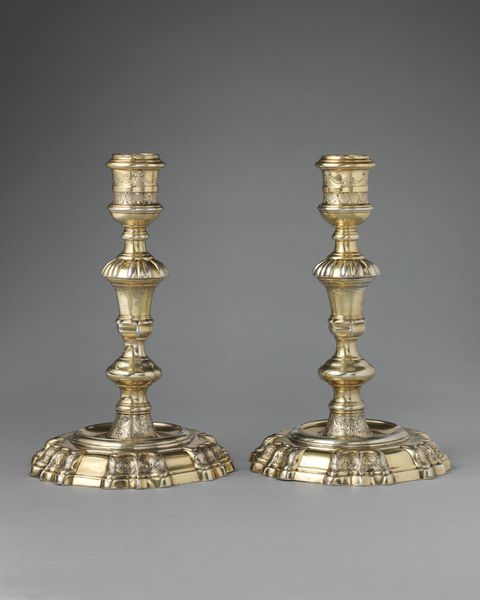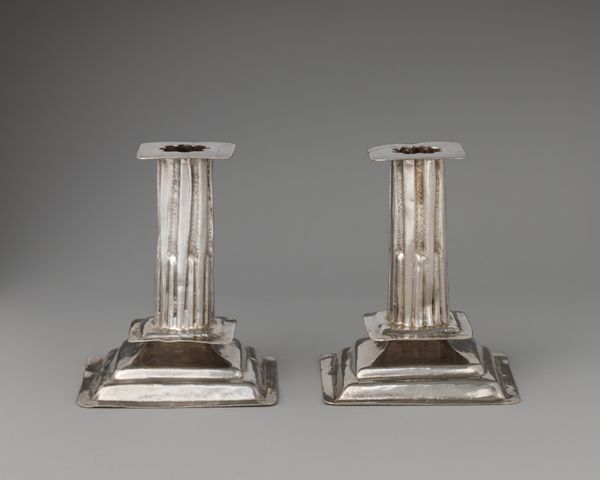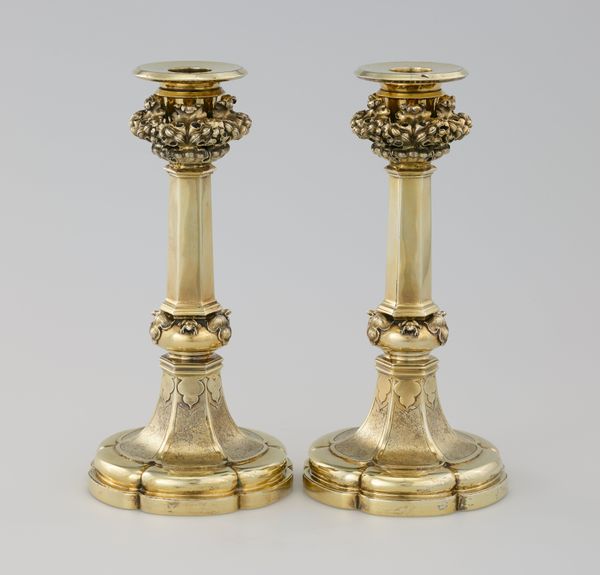
silver, metal, sculpture
#
silver
#
baroque
#
metal
#
form
#
geometric
#
sculpture
#
decorative-art
Dimensions: Overall: 11 7/16 x 6 1/2 x 6 1/2 in. (29.1 x 16.5 x 16.5 cm); 25 6 oz. (808.3 g) Without bobeche: H. 10 15/16 in. (27.8 cm); 22 oz. 17 dwt. (710.9 g) Bobeche: 2 1/4 x 2 13/16 x 2 13/16 in. (5.7 x 7.1 x 7.1 cm); 3 oz. 3 dwt. (97.4 g)
Copyright: Public Domain
Editor: Here we have "Candlestick," crafted in silver by Cornelius Kierstede between 1702 and 1708. The linear forms and the bright metallic sheen give them an almost severe formality. What stands out to you about this piece? Curator: The candlesticks speak to a particular moment in the social history of early 18th-century New York. Kierstede was a prominent silversmith catering to the city's elite. Objects like these were powerful symbols of status and refinement, reflecting not only wealth but also a desire to emulate European tastes. Think of the baroque style: it's not just about decoration; it's about projecting power. How do you see this object fitting into that society? Editor: I hadn’t considered the social statement the piece would make. Is the emphasis on clean, geometric forms indicative of that display of power? Curator: Precisely! And the material, silver, is critical. It's precious, durable, and reflects light in a way that elevates even mundane activities like lighting a candle. Who owned such pieces and under what conditions were these enjoyed? How might light reflected from these objects impacted its context? Editor: I imagine in the glow of candlelight the geometric forms would almost dissolve in to shimmers. It’s interesting to think how an everyday object would function to build and maintain a certain perception. Curator: Exactly. The candlelight dances on the silver, animating the surfaces. These candlesticks are more than functional objects. They are active agents in shaping the visual and social landscape of their time. Editor: So, looking at them again, they are less cold and severe than I originally thought, and more active participants within domestic life and culture. Thank you for this different view! Curator: Indeed, thinking about such decorative art and how the object serves a culture in symbolic means changes one’s approach and initial reading.
Comments
No comments
Be the first to comment and join the conversation on the ultimate creative platform.
